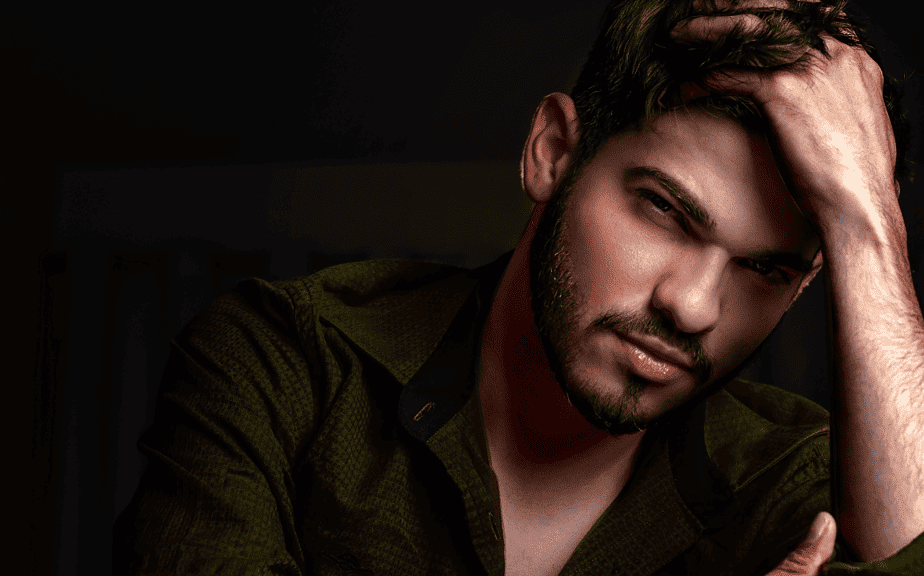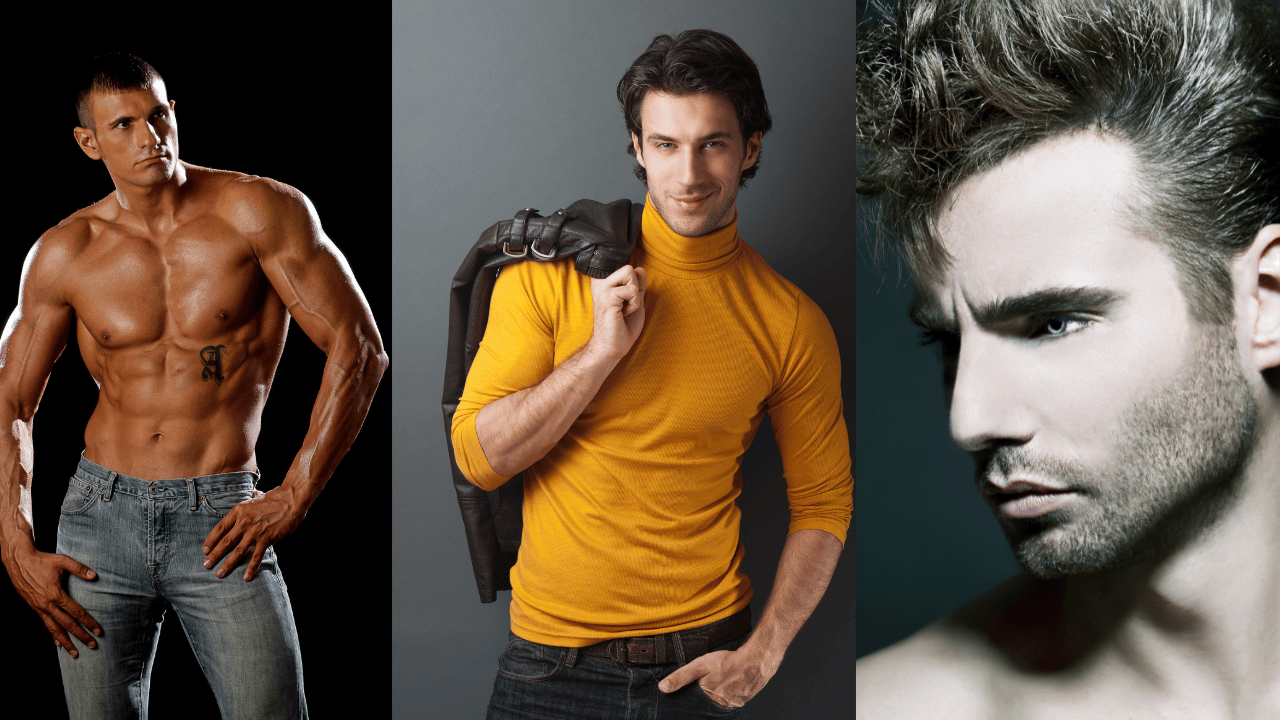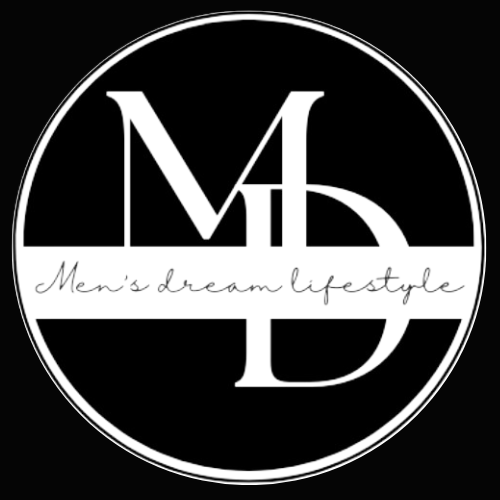
Becoming a male model is a challenging but rewarding career path. To start, you’ll need to have a good physical appearance and take care of yourself. Build a portfolio of professional photos that showcase your range and versatility. Network and submit your portfolio to modeling agencies or clients in search of models. Attend castings and go-sees to meet with clients and potentially land modeling jobs. Build your brand and following on social media to increase your visibility and attract more work. Stay in good physical shape and take care of your skin and grooming. Remember that the modeling industry can be very competitive, so it’s important to be persistent and not to get discouraged if you face rejection.
Becoming a male model typically involves the following steps:
- Get professional photos taken of yourself in a variety of poses and looks.
- Build a portfolio of these photos to showcase your range and versatility.
- Network and submit your portfolio to modeling agencies or clients in search of models.
- Attend castings and go on go-sees to meet with clients and potentially land modeling jobs.
- Build your brand and following on social media to increase your visibility and attract more work.
- Stay in good physical shape and take care of your skin and grooming.
It’s important to remember that the modeling industry can be very competitive, so it’s important to be persistent and not get discouraged if you face rejection.
Get professional photos taken of yourself in a variety of poses and looks

Yes, getting professional photos taken is an important step in becoming a male model. These photos will serve as your portfolio and will be used to showcase your range and versatility to potential clients and agencies. When having your photos taken, it’s important to work with a professional photographer who has experience in the modeling industry and can help you achieve the looks and poses that will be most appealing to clients. You can also consider hiring a wardrobe stylist and hair and makeup artist to help you look your best. You should also have a variety of photos that show your range such as head shots, full body, casual wear, formal wear, etc.
Build a portfolio of these photos to showcase your range and versatility
Building a portfolio of your professional photos is an important step in showcasing your range and versatility as a become a male model. A portfolio is a collection of your best and most recent photos that demonstrates your modeling abilities, and it is often used to showcase your work to potential clients and agencies.
Here are a few tips for building a great portfolio:
- Only include your best and most recent photos.
- Show a variety of looks and poses, including head shots, full-body shots, and different types of clothing and styles.
- Make sure the photos are well-lit and in focus.
- Keep the portfolio simple and easy to navigate.
- Keep it updated regularly with new and fresh photos.
Once your portfolio is complete, you can start submitting it to modeling agencies or clients in search of models. You can also use it to promote yourself on social media, and to bring with you to castings and go-sees.
It’s also worth noting that having a strong online presence is becoming increasingly important in the fashion industry, so consider creating an online portfolio or a website to showcase your work, and make sure it’s easy to find and access.
Network and submit your portfolio to modeling agencies or clients in search of models
Networking and submitting your portfolio to modeling agencies or clients in search of models is an important step in becoming a male model. This is how you get your foot in the door and start getting work as a model.

Here are a few tips for networking and submitting your portfolio to become a male model:
- Research reputable modeling agencies in your area and make a list of the ones you would like to submit your portfolio too.
- Look for open calls or submission guidelines on the agency’s website and follow them closely.
- Tailor your portfolio and cover letter to the specific agency or client you are submitting to.
- Follow up with the agency or client after submitting your portfolio to show your interest and enthusiasm.
- Network with other models, photographers, stylists, and industry professionals to get your name out there and learn about potential job opportunities.
It’s important to note that the modeling industry is very competitive, and getting signed by an agency or landing your first job can take time, so be prepared to be persistent and not get discouraged if you face rejection. It’s also important to remember that not all agencies are created equal and you should do your research on the agency to ensure they have a good reputation in the industry and they are not a scam.
Additionally, you can also look for modeling jobs on online platforms such as Model Mayhem and One Model Place, which connect models with photographers, stylists, and clients.
Attend castings and go on go-sees to meet with clients and potentially land modeling jobs
Attending castings and go-sees is an important step in the process of becoming a male model, as it is an opportunity to meet with clients and potentially land modeling jobs.
A casting call is an invitation from a client or agency for models to come in and audition for a specific job or campaign. You will be required to bring your portfolio and comp card (a small card with your best photos and basic information) and be prepared to take on different looks and poses during the casting.

A go-see is similar to a casting, but it is typically less formal. A client or agency will invite you to come in and meet with them, view your portfolio, and take some polaroids or snapshots of you.
Here are a few tips for attending castings and go-sees to become a male model:
- Be on time, well-groomed, and dressed appropriately.
- Bring your portfolio and comp card with you to the casting or go-see.
- Be prepared to take on different looks and poses.
- Be confident and professional, and make a good impression on the client or agency.
- Follow up with the client or agency after the casting or go-see to show your interest in the job.
It’s also important to remember that not every casting or go-see will result in a job, so don’t get discouraged if you don’t land a job right away. Keep attending castings and go-sees, and keep building your portfolio and network.
Build your brand and following on social media to increase your visibility and attract more work
Building your brand and following on social media is an important step in becoming a male model, as it can help increase your visibility and attract more work. Social media platforms like Instagram, TikTok, and Twitter are great ways to showcase your portfolio, connect with other models, photographers, stylists, and industry professionals, and promote yourself to a larger audience.

Here are a few tips for building your brand and following on social media to become a male model:
- Choose one or two social media platforms that you will use to promote your modeling career and stick to them.
- Create a professional and consistent look for your social media profiles.
- Post a mix of professional and candid photos and videos that showcase your range, versatility, and personality.
- Use hashtags and keywords that are relevant to the modeling industry to make it easier for potential clients and agencies to find you.
- Engage with your followers by responding to comments and messages, and by following and commenting on other models and industry professionals.
- Be authentic and true to yourself, and show your personality on social media.
It’s also important to remember that building your brand and following on social media takes time and effort, so be consistent and patient. Building a large following on social media can be beneficial for your career, but it’s not the only way to get work in the industry.
Stay in good physical shape and take care of your skin and grooming
Staying in good physical shape and taking care of your skin and grooming is an important step in becoming a male model. Physical appearance is a key aspect of the industry, and models are expected to have fit and healthy bodies.
Here are a few tips for staying in good physical shape to become a male model:
- Develop a regular exercise routine that includes cardio and strength training.
- Eat a healthy and balanced diet.
- Get enough sleep and hydrate regularly.
- Avoid smoking and excessive alcohol consumption.
- Consult a professional trainer or nutritionist if you need help developing a workout or diet plan.

Taking care of your skin and grooming is also important for models. Here are a few tips for taking care of your skin and grooming:
- Follow a regular skincare routine that includes cleansing, moisturizing, and protecting your skin from the sun.
- Keep your hair, nails, and teeth well-groomed and clean.
- Keep your body hair well-groomed and trimmed.
- Get a professional haircut and hairstyle that suits your face shape and features.
It’s important to remember that physical appearance is not the only thing that matters in the modeling industry, but it’s still an important aspect of the job. Make sure you take care of your body and looks, but also focus on building your portfolio, networking, and promoting yourself.
How To Become A Male Model: Professional Modeling Advice For Men
The professional model today
The professional model today is expected to have a versatile look and range, as well as a strong work ethic and professionalism. They are also expected to have a good understanding of the industry, and be able to navigate the various aspects of modeling, such as castings, photo shoots, and booking jobs.
Models today also need to be aware of the changes and the new trends in the industry. For example, diversity and representation are becoming increasingly important, and clients and agencies are looking for models of all shapes, sizes, ethnicities, and abilities. Social media has also become an essential tool for models to promote themselves, connect with other industry professionals, and gain visibility with potential clients.

Additionally, many models today are also expected to be able to handle their own bookings and business management. This includes communicating with clients and agencies, negotiating rates, and handling contracts and paperwork.
The industry is also becoming more and more digital and virtual, with many events, castings, and photoshoots happening online, models should be comfortable with digital technologies and be able to present themselves well on camera.
It’s important to remember that the modeling industry is constantly evolving, and it’s essential for models to stay informed and adapt to the changes in order to have a successful career.
Be persistent
Being persistent is an important trait for anyone pursuing a career in modeling, as the industry can be highly competitive. There will be many rejections and setbacks along the way, and it’s important to not let these discourage you from pursuing your dream.
Here are a few tips for being persistent to become a male model:
- Set realistic and achievable goals for yourself, and work towards them consistently.
- Don’t take rejection personally, and use it as a learning experience to improve your skills and portfolio.
- Network and build relationships with other models, photographers, stylists, and industry professionals.
- Use social media to promote yourself and build your brand.
- Keep learning about the industry and staying informed about the latest trends and changes.
- Stay positive and motivated, even when things get tough.
It’s important to remember that success in the modeling industry doesn’t happen overnight, and it takes time, effort, and persistence to build a successful career. Don’t give up, keep pushing forward, and remember why you started.
Avoid Scams
The modeling industry is not immune to scams, and it’s important to be aware of them and know how to avoid them. Here are a few tips for avoiding scams in the modeling industry:

- Be wary of unsolicited offers or emails, especially those that ask for money upfront or personal information.
- Do your research on any agency or photographer before working with them. Look for reviews and testimonials, check their website and social media, and make sure they have a good reputation in the industry.
- Be cautious of modeling competitions or conventions that require you to pay a fee to participate. Many legitimate competitions and conventions are free to enter.
- Be aware that some “agencies” are actually scouting companies that charge models to be listed on their website or to be sent to clients.
- Be cautious of “photographers” who want to take your picture and then want you to pay for the photos or want to keep you to work for them exclusively.
- Remember that a legitimate modeling agency will not require you to pay them money upfront or for services such as portfolio building.
It’s also important to remember that if something seems too good to be true, it probably is. Trust your instincts, and if something feels off or seems suspicious, don’t hesitate to walk away. If you are unsure, you can always reach out to a professional or an industry association for advice.
Discover your strengths
Discovering your strengths as a model is an important step in developing a successful career. By understanding what sets you apart from other models and what you do best, you can focus on building your portfolio and promoting yourself to clients and agencies in a way that highlights your unique strengths.

Here are a few tips for discovering your strengths as a model to become a male model:
- Assess your physical attributes, such as your height, body type, and facial features, and consider how they might be used in different types of modeling.
- Look at your portfolio and identify the photos that you feel are your best and most successful. Consider what makes these photos stand out and how you can replicate that in your future work.
- Ask for feedback from industry professionals, such as photographers, stylists, and agents, to get an outside perspective on your strengths and weaknesses.
- Pay attention to the types of modeling work that you enjoy the most and feel most comfortable doing, and consider how you can focus on building your skills in these areas.
- Take time to experiment with different looks, poses, and styles, and see what feels most natural and authentic for you.
Once you have a clear understanding of your strengths, you can use this information to inform your portfolio, your promotional materials, and the types of jobs you pursue. This will increase your chances of success and make you stand out in the industry.
Gain exposure
Gaining exposure as a model is an important step in building a successful career, as it allows you to showcase your talents and skills to potential clients and agencies. Here are a few ways to gain exposure as a model:

- Build a strong portfolio that showcases your range, versatility, and unique strengths as a model.
- Network with other models, photographers, stylists, and industry professionals to gain insight into the industry and learn about potential job opportunities.
- Use social media platforms to promote yourself and your portfolio to a larger audience. Make sure your profiles are consistent, and professional, and showcase your best work.
- Attend castings and go-sees to meet with clients and agencies in person.
- Participate in local modeling events such as fashion shows, trade shows, and competitions to gain visibility and build your brand.
- Try to get your face out there by doing some free test shoots with photographers, hair stylists, makeup artists, etc.
- Join online modeling communities and forums where you can connect with other models and learn about potential opportunities.
- You can also look for modeling jobs on online platforms such as Model Mayhem and One Model Place, which connect models with photographers, stylists, and clients.
It’s important to remember that gaining exposure takes time and effort, and it’s important to be persistent and not get discouraged if you don’t get immediate results. Keep building your portfolio, networking, and promoting yourself, and be open to new opportunities as they come along.
Networking
Networking is an essential aspect of building a successful career as a model. Building relationships with other models, photographers, stylists, and industry professionals can help you gain insight into the industry, learn about potential job opportunities, and promote yourself to a wider audience.
Here are a few tips for networking to become a male model:
- Attend industry events such as fashion shows, trade shows, and networking events to meet other models, photographers, stylists, and industry professionals.
- Connect with other models, photographers, stylists, and industry professionals on social media platforms such as Instagram, TikTok, and Twitter.
- Join modeling communities and forums where you can connect with other models and learn about potential opportunities.
- Collaborate with other models, photographers, stylists, and industry professionals on creative projects and photo shoots.
- Follow the work of other models, photographers, stylists, and industry professionals and engage with their content on social media.
- Stay professional and respectful when networking and building relationships.
- Be willing to help others and take on projects for free or for very low pay in order to gain exposure and experience.
- Be open to new opportunities, and don’t be afraid to reach out to people in the industry to introduce yourself and express your interest in working with them.
Networking can be a valuable tool for models
Sign with an Agency
Signing with an agency is an important step in building a successful career as a model. Agencies act as a representation and management for models, and can help you gain exposure, book jobs, and negotiate contracts.

Here are a few tips for signing with an agency to become a male model:
- Research reputable agencies in your area and make a list of the ones you would like to submit your portfolio too.
- Look for open calls or submission guidelines on the agency’s website and follow them closely.
- Tailor your portfolio and cover letter to the specific agency you are submitting to.
- Follow up with the agency after submitting your portfolio to show your interest and enthusiasm.
- Be prepared to attend interviews, castings, or go-sees with the agency.
- Be aware that some agencies may ask for money upfront for expenses such as photo shoots or website fees, but be cautious, most legitimate agencies won’t ask for money from the model.
- Read and understand the terms of the contract before signing with an agency.
- Remember that you have the right to terminate the contract if you are not satisfied with the agency’s representation or management.
It’s important to remember that not all agencies are created equal, and it’s important to do your research on the agency to ensure they have a good reputation in the industry and that they are the right fit for you and your career goals. It’s also important to understand that signing with an agency doesn’t guarantee work, but it can open up more opportunities and provide a level of professional management.
Build a portfolio
Building a portfolio is an essential step in starting a career as a model. Your portfolio is a visual representation of your range and versatility as a model, and it’s what clients and agencies use to evaluate your potential as a model.
Here are a few tips for building a portfolio to become a male model:
- Gather a variety of photos that showcase your range and versatility as a model. This should include a mix of headshots, full-body shots, and a variety of poses and looks.
- Make sure the photos are high-quality, well-lit, and professionally retouched if necessary.
- Choose photos that show your best angles and features, and that best represent your unique look and style.
- Consider working with a professional photographer to get a range of images that will showcase your strengths.
- Update your portfolio regularly with new and diverse photos, to show your range and versatility.
- Keep your portfolio simple and easy to navigate, and make sure your contact information is clearly visible.
- Tailor your portfolio to the specific type of modeling you want to pursue, for example, if you want to be a fitness model, make sure to include pictures that showcase your athletic build.
A portfolio is an important tool that will help you promote yourself and gain exposure in the industry. Investing time and effort into building a strong portfolio will pay off in the long run, and increase your chances of success in the modeling industry.
Learn Your Angles
Learning your angles as a model is an important step in building a successful career, as it allows you to present yourself in the best possible light and showcase your unique strengths and features.

Here are a few tips for learning your angles to become a male model:
- Practice different poses and facial expressions in front of a mirror to see which ones are most flattering for your body type and facial features.
- Experiment with different lighting and camera angles to see which ones bring out your best features.
- Work with a professional photographer and ask for their guidance on how to position your body and face to look your best.
- Pay attention to the angles and poses that photographers and clients ask you to use during photo shoots, and take note of the ones that seem to work best for you.
- Practice posing in front of a camera, and take note of which angles and poses feel most natural and comfortable for you.
- Take pictures of yourself, and look at them critically to see which angles make you look the best.
- Remember that every model is unique and what works for one model may not work for another, so it’s important to experiment and find what works best for you.
It’s important to remember that everyone has their own unique look and features, and learning your angles is a process that takes time and practice. Be patient and keep experimenting, and you’ll find the angles that work best for you.
Get Confident on Camera
Being confident on camera is an important part of becoming a male model. Being comfortable and confident in front of the camera will help you to relax, be yourself, and produce natural-looking images. Here are a few tips to help you get confident on camera:

- Practice in front of a mirror. This will help you to become more familiar with your body, facial expressions, and poses.
- Practice in front of a camera. It’s good to get used to the camera and become familiar with how you look on camera.
- Learn to relax and be yourself. The more relaxed you are, the more natural and comfortable you’ll look on camera.
- Be prepared for your shoot. Know what you’re going to wear and what poses you’ll be doing, this will help you to feel more relaxed and confident.
- Take direction well. Listen to the photographer’s instructions and be open to feedback, this will help you to get the best results.
- Use visualization techniques, imagine yourself in the shoot, how you’ll be posing, how you’ll be looking, etc. This will help you to feel more confident and prepared.
- Lastly, remember that not every shot is going to be perfect. Sometimes you’ll take a shot that you don’t like, but that’s okay. Every model has their own unique look and features, and confidence on camera comes with experience.
Being confident on camera takes practice and patience, but with time and effort, you’ll become more comfortable and natural in front of the camera, and be able to produce great images.
Be willing to invest
Being willing to invest time, effort, and money is an important aspect of building a successful career as a model. While the modeling industry can be highly competitive, those who are willing to invest in themselves and their careers are more likely to succeed.
Here are a few ways you can invest in your modeling career:
- Invest in professional photos and portfolio building. Having high-quality photos and a professional portfolio is essential for gaining exposure and booking jobs.
- Invest in your appearance by staying in good physical shape, taking care of your skin and grooming, and updating your wardrobe.
- Invest in your education and skills by taking classes and workshops on modeling, acting, and other related subjects.
- Invest in networking and building relationships with other models, photographers, stylists, and industry professionals.
- Invest in your brand and online presence by creating a strong and professional website, and promoting yourself on social media platforms.
- Invest in your own self-promotion, whether it’s printing out business cards, brochures, or even postcards that you can leave with the clients you meet.
It’s important to remember that the modeling industry is constantly changing and to be successful, you’ll need to be willing to adapt and evolve with the industry. Being willing to invest in yourself and your career will give you the best chance of success.
Types of male models

There are several different types of male models, each with its own unique look and set of requirements. Here are a few of the most common types of male models:
Commercial models: These models typically have a more “average” or “realistic” look and are used in advertising campaigns for products such as clothing, electronics, and automobiles.
Fashion models: These models have a taller and leaner build, and are used in high fashion and runway shows.
Fitness models: These models have a strong, athletic build and are used in the fitness and sports-related advertising and campaigns.
Plus-size models: These models are larger than the typical fashion model and are used in plus-size clothing campaigns and editorials.
Editorial models: These models have a unique and striking look, and are used in high-fashion editorials and campaigns.
Men’s fitness models: They have an athletic build, toned and defined muscles, and are used in fitness, health, and nutrition-related advertisements.
Hair models: These models are known for their hairstyles and are used in hair and grooming campaigns, hair shows, and print advertisements.
Parts models: These models are used for specific body parts such as hands, feet, or facial features.
It’s important to remember that every model is unique and some models may fit into more than one category. Also, the requirement for each type of model can vary depending on the clients, agency, or industry.
Modeling Advice for Beginners to Plus Size Fashion
If you’re interested in starting a career in plus-size fashion modeling, here are a few tips to help you get started:
Embrace your size and shape: One of the most important things to remember as a plus-size model is to embrace your size and shape. The fashion industry is starting to embrace a more diverse range of body types, and you have a unique look and style to offer.
Build a strong portfolio: Your portfolio is your calling card in the industry, so make sure it’s strong and showcases your range and versatility. Make sure your portfolio includes a mix of headshots, full-body shots, and a variety of poses and looks.
Network with other models and industry professionals: Building relationships with other models and industry professionals can help you gain insight into the industry, learn about potential job opportunities, and promote yourself to a wider audience.
Stay in good physical shape: While it’s important to embrace your size and shape, it’s also important to stay in good physical shape. Eating a healthy diet and engaging in regular exercise will help you feel confident and energized.
Be confident: Confidence is key, and it’s especially important when you’re starting out in the industry. Believe in yourself and your abilities, and don’t be afraid to speak up and ask for what you want.
Look for opportunities: Look for opportunities to expand your portfolio and gain exposure in the industry. This might include working with photographers for test shoots or applying for plus-size modeling contests and events.
Be open-minded: Be open-minded to new opportunities and don’t be discouraged if you don’t get immediate results. The industry is constantly changing and evolving, so it’s important to be open to new opportunities
Body Positivity
Body positivity in modeling is the acceptance and representation of all body types and shapes in the fashion industry. It’s about promoting diversity and inclusivity on the runway, in print and online, and breaking away from traditional, unrealistic beauty standards.

Here are a few ways body positivity is being promoted in the modeling industry:
- The use of plus-size models to represent a wider range of body types in fashion campaigns and on the runway.
- The use of models of different ages, races, and abilities to promote diversity and inclusivity.
- The use of un-retouched images to promote authenticity and real-life representation.
- The use of models who have stretch marks, cellulite, and other “imperfections” to challenge societal norms.
- The use of models who have a variety of shapes, sizes, and proportions to showcase the diversity of the human body.
- The use of social media to promote body positivity and self-love by models, photographers, stylists, and industry professionals.
Body positivity in modeling is about promoting diversity, inclusivity, and representation of all body types in the fashion industry. It’s about breaking away from traditional beauty standards and promoting a more realistic and diverse representation of bodies in the media.
Famous plus-size male models
There are a growing number of plus-size male models in the fashion industry today. Here are a few famous plus-size male models that have made a name for themselves in the industry:
Zach Miko: He is one of the first plus-size male models to be signed to a major modeling agency, IMG. He has modeled for brands such as Target and ASOS and has been an advocate for body positivity in the industry.
Shaun Ross: He is an American model and actor who has been featured in campaigns for brands such as H&M, Nike, and ASOS. He is known for his unique look and androgynous style.
Philomena Kwao: She is a British-Ghanaian model who has been featured in campaigns for brands such as Lane Bryant, Torrid, and Swimsuits For All. She is also a body-positive advocate and works to promote diversity and inclusivity in the fashion industry.
Zach Rance: He is an American model and reality star who gained fame on the reality show Big Brother. He has been featured in campaigns for brands such as ASOS and Target.
James R. Sanders: He is an American model and influencer who has been featured in campaigns for brands such as J.C. Penney, Nike, and ASOS. He is also an advocate for body positivity and promotes self-love on his social media platforms.
These models are breaking barriers in the fashion industry and proving that beauty comes in all shapes and sizes.
Men’s trending fashion and how to look attractive. Here teaching fashion, so make sure to check it out.
Men’s Fitness tips, what you eat and how to stay fit your body. The best workout and best diet plan, so make sure to check it out.
Men’s lifestyle tips, how to live a better life, and changing your lifestyle tips, so make sure to check them out.
It cannot be denied that men have finally come to their senses when it comes to good grooming and fashion statement.
Men are also equally frustrated with bad hair days in their life, even though not as annoyed as women. Even though men have short haircuts, they also face problems in maintaining their hair.
There are no formulae for success but there are some successful entrepreneur tips that can help make things a little simpler.









